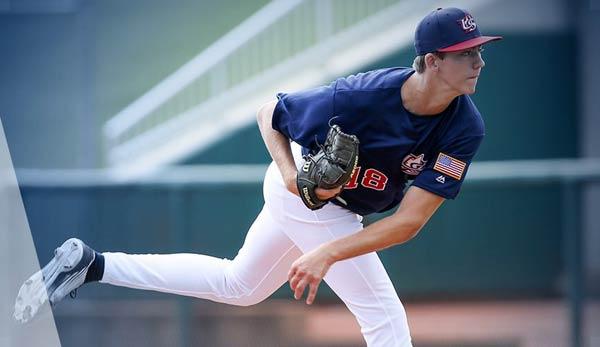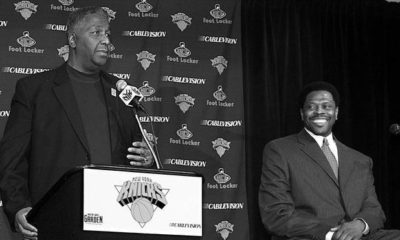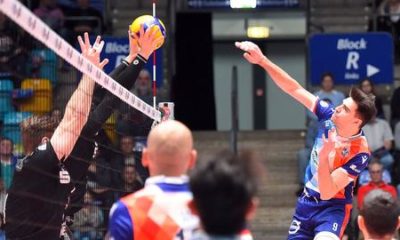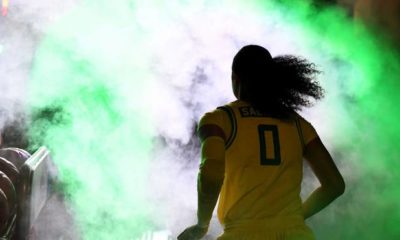US-Sport
MLB: Draft 2018: High School Pitcher Matthew Liberatore in Portrait
Matthew Liberatore is considered the most promising high school prospect in the 2018 class of MLB Drafts. The left-hander is already compared to an established star and is characterized by his fearless attitude. SPOX introduces the boy from Arizona.
At the latest since Billy Beane implemented his “Moneyball” approach to Oakland Athletics around the turn of the millennium, one should follow his example and rather critically eye high school pitcher.
The problem: The parameters are completely different from those in the professional area, as is the general performance level. And: College players have much more meaningful and comprehensive statistical data. The numbers you look at these days to get the most objective impression of a player’s performance.
This year there are also some high school players who are among the top prospects of the whole draft class. The clear number one high school player is said to be Matthew Liberatore, a left-handed pitcher from Mountain Ridge High School in Arizona.
The senior has with its nearly 1.96 meters body height guards measurement for a pitcher. However, his 90 kilogram weight seems to be still expandable, at the moment he still seems a bit too gawky.
As far as his stuff is concerned, scouts see him as a more classic pitcher. He’s not one to throw extremely hard, as is the trend these days. He can reach 95 to 96 miles per hour with his fast ball, which is quite respectable for a player of his age group. But it’s actually in the range of 91 to 94 miles per hour.
It throws from a “loose” 3/4 slot and thus reaches so-called “running” action on the fastball, so the ball pushes to the side, which makes it harder to hit. He also has good control with his primary pitch.
He also has a 12-6 curve ball and a changeup, which – if you believe some scout – could become his best pitch in the pros. The reason for this thesis is curious: The changeup, which he throws out of the same slot as his fastball and which has the same movement as the fastball until it breaks down just before the strike zone, throws liberators about 8 to 10 MPH slower than his fastball.
Thus the pitch reaches about the bat speed of a normal high school hitter, which is why it even becomes an advantage for such a hitter. That’s why he threw that pitch so rarely. In the pros, however, the pitch against professional bat speed should become a weapon.
What Scouts also noticed positively in spring 2018 was a new slider that Liberatore acquired over the winter. This is also currently rated 55 on the 20-80 scouting scale, which is more than solid for a player just before the draft. Everything over 60 is already outstanding at the time of a career.
All in all, he could be at least three “plus” pitches in the not too distant future. In addition, his attitude speaks for Liberatore: He is not afraid to pitch backwards – to start an at bat with off-speed pitches and only set the fast ball later. And even if he lies in the back of the count, he throws his curveball without fear.
He also copes well with pressure as his strong performance in the U18 World Cup final against Korea underpinned (6 shutout innings).
But as with any other potential draft pick, there are things to criticize about left-handed people from Arizona. The big question seems to be how high his upside can still be. Today’s rather manageable fast ball is regarded as a problem, as is the absence of a power-breaking ball. Nowadays you want to see a potential pitching ace with a high-90s stuff. But Liberatore is generally regarded as a “high-floor” high school pitcher, which is not a bad thing.
A common evaluation of his Ceiling is currently a number 2 starter, worst case a strong number 3, which has the disadvantage that teams would rather not consider him an absolute top pick. But it would have the advantage that such a player could march through the Minors relatively quickly and serve very promptly in the MLB.
Because no matter how you look at it, Liberatore has no really clear weaknesses. Deficits like his fastball speed, which can certainly be increased with more muscle mass – he would have the frame with it – can also be seen as nagging at a high level. The lack of power-breaking ball is rather problematic, but also not seriously bad.
Many a scout has already compared it to Cole Hamels, who has similar facilities to Liberatore. And Hamels quickly found his way into the league at the time, which was impressively underpinned not least by his World Series MVP Award 2008, which was only his third season at the time.
In the end, however, Liberatore goes into the draft without pressure anyway. If, in his opinion, he is not picked high enough or does not receive an appropriate signing bonus, then he goes to college in Arizona, where he already has a scholarship to the Wildcats.
It’s rare for a high school player to be considered a safe bank for success in the MLB draft, but this year Matthew Liberatore could be such a player.
This article was published without previous view by the Major League Baseball.


















You must be logged in to post a comment Login